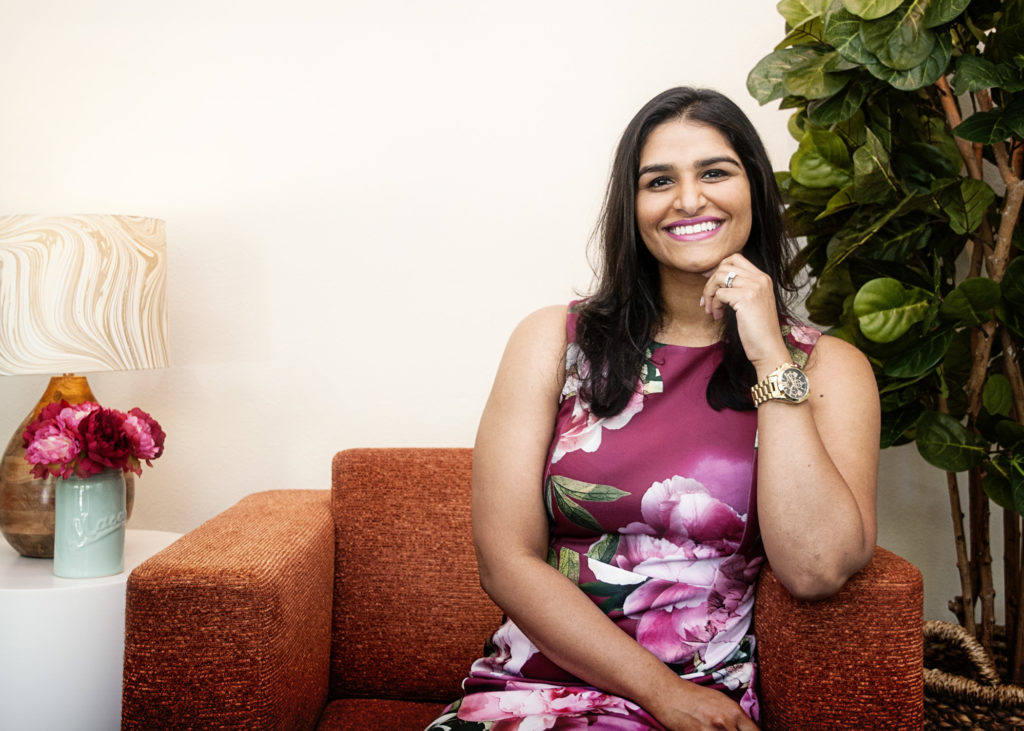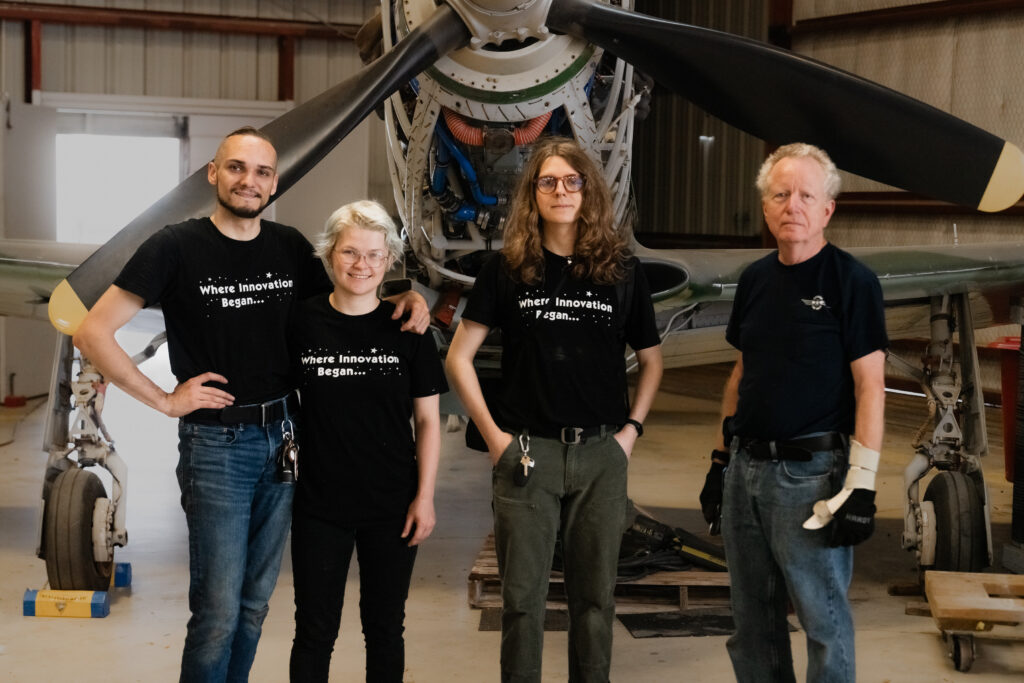
Shanaz Ikonne (pronounced: shah-nawz) is a second generation South Asian American, social justice advocate, and licensed professional counselor/board certified. She’s a wife, fierce mama and Texas therapist serving BIPOC and LGBTQIA+ populations. It is her mission to support women going through various stages of life, especially the journey of motherhood. Shanaz believes in treating the whole person and offering a collaborative and inclusive approach to nurturing the mind and body. As a therapist, she helps folks find their footing when they feel detached, unseen and unheard. Shanaz is passionate about serving women, mothers, and young professionals, in addition to those with trauma wounding. She believes holding space and offering support is essential to healing past and present trauma. She offers brain spotting and other somatic approaches to serve as a modality to overcome life challenges, but the focus is relational. The therapeutic relationship is the agent for change in our work together. In her practice, Shanaz helps you identify pieces of your that may be unresolved and hold you back from reaching your most authentic self. She believes everyone has a story to share and counseling helps identify those barriers, creates room for healing and an opportunity to evolve and grow. We often repeat what we don’t repair, and Shanaz is here to help you find a solution that creates meaningful change. Shanaz is currently offering virtual group therapy to support perinatal and postpartum women. For more information please visit www.shanazikonne.com or follow her on instagram.com/shanazlpc for more details.
What was your educational background like to get into this field?
I began always being interested in people, how they think, how they feel, that’s just something that I was always drawn to. I remember just always being curious about mental health and awareness around that. And so that’s part of what got me into the field of counseling. I studied psychology in my undergrad, so I went to the University of Texas at Dallas, and I did my degree in psychology. I realized that it’s not going to stop there and that it’d be hard to find a job and to really get into the services. I took a year off with the intention of exploring options around working with children and families and finding a niche around supporting younger individuals. That led me to volunteering at the Scott and Wright Hospital in Dallas, where I worked in the child life department, and I really enjoyed how the medical staff was able to support parents with upcoming surgeries or things around their children. I really wanted to be part of that, but recognized that I needed a higher degree, and so I went to the University of North Texas and pursued my degree in counseling and I specialized in play therapy to work with children. My path led me to working with adults with COVID. It’s been quite a journey, but a lot of things happen in between.
Are the degree plans totally different when working with children vs. adults?
The University of North Texas will offer the basic Master of Science at counseling and then you can specialize in adults or children. I chose the child path because it’s well-known for their play therapy center. And you could also expand if you wanted to work with adults, they’d give you more classes to take and specialize in. A lot of the time professors would prefer just to go that route because we’d have classes with postdocs or people that were in private practice that came back to actually take child development classes because they find it so valuable.
What is the most common disorder you noticed working with children and did that change with the pandemic?
When working with children, it was mostly like self-worth. There was a lot of bullying, a lot of anxiety and stress around identity. I worked with children from 4 and up, and so a lot of issues also involved domestic violence and abuse. When I started off working, I volunteered and interned at the Dallas Children’s Advocacy Center and that was a lot of trauma related to physical, emotional, and sexual violence. I was able to advocate and support children through play therapy and other means that were unique to their understanding and cognitive abilities. I was working for five years around children and then once the pandemic hit it was very challenging. I started to work at a school, and for the past three years I worked in trauma with teachers and families and students. The program was unique because I didn’t work at this school, but I worked in collaboration with them. They housed me in a portable and I was able to set up an office there and pull students and teachers and faculty and staff and provide care. They wouldn’t miss a whole lot of school or parents wouldn’t have to drive off campus or insurance. It was all based on a grant, and services were a hundred percent free, and so that was a unique program that evolved over time. Then once the pandemic hit, students were then either at home with their laptops or cell phones. The challenges began where issues of internet disparities were popping up. Some of them didn’t have access to Wi-Fi and so it was really challenging initially to support and provide that comfort and be that anchor for them during this confusing time. But as things develop, the school was able to provide technology and devices for us to meet with them. That’s how it evolved into something that was normal for them.
Can you get an education specifically in group dynamics or working with school programs?
I would say its half and half with experience. They have a group counseling class that they’ll offer you and they teach you the structure dynamics, whether it’s an open or closed group. But then it’s up to the clinician and the professional to start the group and to lead it out. It’s about safety, it’s about rapport, and then if it’s a psychoeducational group or a process or support group, there’s so many modalities to bring in. A lot of the groups that I ran at the school were process groups. It was either around parents that are divorced or recently separated, children with anxiety, or children that had various traumas. That would be a good fit to pull each other out of that and build that trust and friendship to grow.
Are children with an uneasy homelife collaborative during these sessions or do you have to speak with them individually? What about the parents?
Yeah, that’s a great question. It really depends on the child’s personality and their terms of safety and what they’ve seen in the house and what kind of conflict. And so usually the first session I meet with the parent and the child, so that I get to know them and establish that I’m a safe person. I’ll meet with the parent and the child and do an intake and understand what the presenting concerns are and how I can support them. Sometimes I’ll ask the parent to leave and come back, or we’ll just go ahead and start moving forward with just the child. I’ll then update the parent every three to four sessions so that they’re part of the process as well. We must have consent from both parents, and so sometimes we must check the custody agreement to see who has the mental health rights, and then we can provide services. For example, one parent can bring a child in for services and the other one has no idea and they both have access to the health. We then must get both parents on board. If there’s already conflict among the adults, sometimes it can make it more challenging for the child to have access to that. It’s all about community and centering around how we can serve the child and co-parent, so the child can have the best outcome in this very difficult transition.
Did the school programs adapt quickly to virtual meetings during the pandemic and did it have an impact on children’s motivations?
Yeah, everything was done virtually. I think it was a little bit of a rocky transition because parents were also trying to figure out their job situation. Situations around finances and all these other stressors that came up. Working with the parents and helping them collaborate on appointments, it changed the whole schedule. Some of the times the kids were in English class, rather than an elective, and so we had to coordinate care around the specific details. And sometimes the parent wasn’t there and so the child would want to sleep or play video games. We had to include other interactive approaches like virtual games and things to talk about, which was also a challenge. I don’t think it was that huge of a dip for me in the caseload that I served. I was working with elementary-aged kids, and so they were really looking forward to that time to connect and check in. They would share other things like “Hey, this is my dog, and this is my room.” There were other elements of their life that they were excited to share. I was able to provide that support and hold space for them to process all these different changes and how to adapt.
Do you think virtual components will continue for your profession or do you think face-to-face sessions are vital?
It could be done either way. If we think about virtual therapy, like right brain to right brain, like my mirror neurons can also be connected to your right brain mirror neurons. And so there can be a level of empathy and connection. Virtually I haven’t noticed a shift in terms of building rapport or helping a client regulate or focus on a task. I would say that virtual therapy has expanded platforms for everyone. I’m licensed in Texas, so that means I can serve everyone in Texas that would be a good fit for me, rather than just a small 10 mile radius where they come to the office and sit and talk to me. I think virtual has made it easier for people to connect with a click of a button. I recognize that some people really enjoy the in-person and just having that physical person sitting across and helping them navigate things. So, I think both are wonderful options, it just depends on the client themselves.
What are the networking groups offered in Rebel in Bloom?
Rebel in Bloom has several groups. We offer a group designed for women that are in their pregnancy journey, postpartum care. I think that it involves a community of support and collaboration. During the pandemic, pregnancy has been really challenging and being able to protect your health and interact and engage. The group’s going to be virtual, it’ll be starting soon to support women of all backgrounds. It will be open to BIPOC women as well as women of color, and however they identify. Natalia Amari, who’s the owner of Rebel in Bloom, leads a virtual group for women of color to support life transitions and support around just being a woman.
Do you have a natural affinity to working with recent mothers?
I think that’s always been there for me. I’ve always been drawn to working with children and found opportunities to work and support families. Having children of my own has really created another layer of understanding and empathy for the challenges that women face. And so, I wanted to be a resource and provide input and understanding for people that didn’t have a safe place to talk to. There’s a lot of stigma with postpartum anxiety and depression. One in ten women will face that and one in five men experience that as well. Bringing awareness to fathers as well as mothers, and providing that support and that community so that they can work through the depression is extremely important to me. This happens with fathers that may have a history of depression, they’re more likely to be at risk for postpartum depression. It could just be a level of disconnect and increased stress. Also lack of sleep or fatigue can also lead them into having more intense and longer-lasting symptoms.
Has there been a common issue amongst the young professional women that you have in these networking groups?
I think there was a lot of shift in self-care and anxiety. A lot of people that I worked with were starting to question their jobs and if they were getting paid enough or if they wanted to have a different work-life balance. Some of them were deciding if they wanted to go back to school or start a family. There were a lot of struggles in the transition of understanding what their life looks like now with the pandemic. And people that have lost loved ones or have lost jobs or identities, were starting to really value that time with themselves and their family. And so, I saw a movement in terms of resting and engaging more and that kind of shifted with the young professionals in terms of career choices, relationships. All of that has shifted since then.
How much has TikTok and other platforms helped promote your brand? Do you think there’s any misinformation that comes from that app?
I sometimes record TikTok videos while I’m doing self-care. So sometimes it’s a great reminder of sharing something that’s meaningful. I think like 90% of the videos are recorded while I’m either in my home gym or outdoors. I think that having TikTok as a platform can reach people across the globe, but also it helps reduce the stigma and helps bring a person like a face to therapy. I think that TikTok is a great platform for that because it also brings emotional wellness and how to identify anxiety or develop a new way of thinking around mindfulness. So I think that it’s a great platform to have, and I think that it’s going to start trending even more with professionals that have specific niches and interest to bring in more people either to their practice or a way of serving the community at large. I think the biggest trend would be people using TikTok as a platform, as a substitute for therapy. I want to encourage users and people that are viewing the content that it’s a great way to open the channel of a discussion or dialogue, but it is no means like therapy. And so, I think it’s best to meet with the professional to build skills around whether you have anxiety or depression. But I also think that some of the platforms and the users can be drawn to like self-diagnosis or those that have more anxiety or looking for other things to label themselves as. And so that could lead into a downward spiral, especially if there’s unresolved traumas or phobias around that. I would encourage those that are using it to take it lightly, you don’t know who exactly the expert is, unless they’re professional or they have a license. It’s not medical advice, I think it’s just a way of bringing discussion and a conversation around mental health.
Are there any upcoming projects you’re excited for?
I think part of it will be leading virtual groups to support women and mothers, but I’d also like to have opportunities to speak in public. I’m open to meeting with businesses and other platforms and companies that don’t have access to mental healthcare and leading like a workshop. Or talk about how to identify anxiety or stress in your body or how to navigate difficult situations at work. I’d love to be a part of that in the community as a consultant to help people bridge that gap between working and wellness. And I think the two are connected and can find a great medium between.

